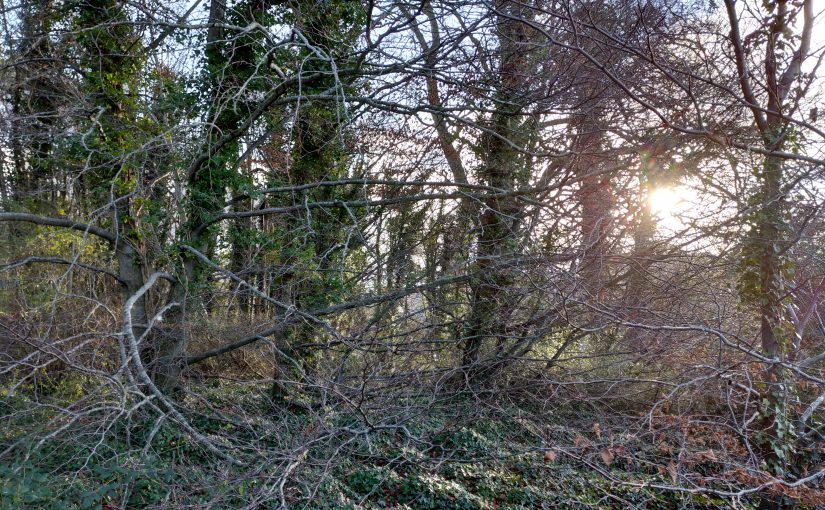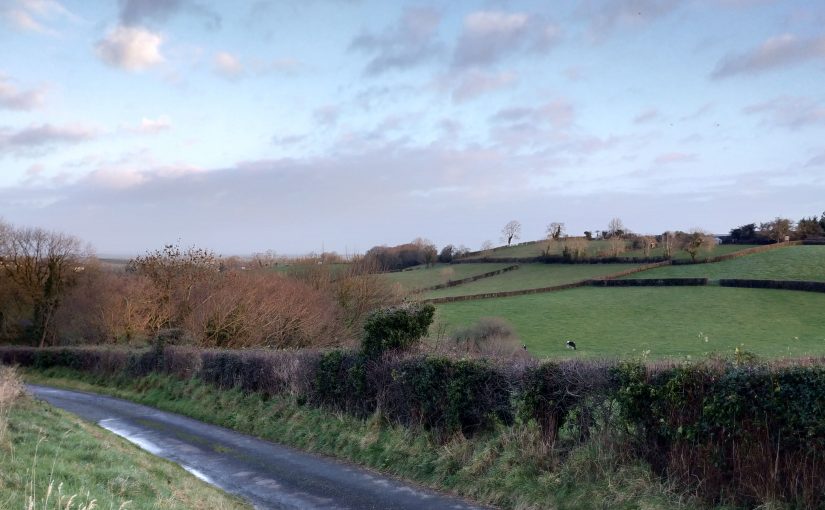Some time in the 1790s, Edward Bunting wrote the tune of Spéic Seóigheach onto a page of his collecting pamphlets, which now form the Damn your Body section of his bound collecting notebooks. Spéic Seóigheach is on Queen’s University Belfast, Special Collections, MS4.29 p.192/190/199/f94v and continues on to the top of p.193/191/200/f95r. In this post we will look at Bunting’s notation of the tune of Spéic Seóigheach on this page, and we will try and relate it to other information that will help us understand what this notation represents.
Continue reading Spéic SeóigheachTag: Damn your Body
A rún, fan agam is fuirigh go ló, ⁊ Bruach na coille craobhaí
On page 194 of his “Damn your Body” bundle of live transcription pages, Edward Bunting wrote live sketches of two song airs, perhaps from the singing of harper and tradition-bearer Charles Byrne in the 1790s. Because I think these are transcribed from songs and not from harp performances, I am going to look at both quickly so we can move on.
Continue reading A rún, fan agam is fuirigh go ló, ⁊ Bruach na coille craobhaíCaití na gCuach
Bunting wrote a live transcription of a tune into his “Damn your Body” pamphlet in the 1790s. We will look at it very briefly and then move on.
Continue reading Caití na gCuachMaidin bhog aoibhinn
During the 1790s, Edward Bunting made four different live transcriptions of the tune of Maidin bhog aoibhinn. They are in different sections of QUB SC MS4.29, and were transcribed from four different tradition-bearers. Bunting published a kind of composite or synthetic version of the tune in his Ancient Music of Ireland (1840). In this post we are going to look at the four different live transcriptions, and try to say something useful about each of them.
Continue reading Maidin bhog aoibhinnBradóg
We have two independent live transcription notations of this tune in Edward Bunting’s papers. In this post we will look at both of them in turn, and then we will discuss the likely provenance of each. We will also briefly consider other versions of the tune.
Continue reading BradógGrá na mBan Óg
Edward Bunting made what looks like a live transcription of a tune which he gives two titles, Grá na mBan Óg or James Plunkett. The notation is in one of his 1790s transcription pamphlets, now bound up as Queen’s University Belfast, Special Collections, MS4.29 page 197/195/204/f97r.
Continue reading Grá na mBan ÓgMoggy
Edward Bunting made what looks to me like a live transcription notation of a tune titled “Moggy” into one of his collecting pamphlets in the 1790s. Lets take a quick look at it.
Continue reading MoggyNa Gamhna Geala
In one of his little 1790s collecting pamphlets, Edward Bunting made what looks like a live transcription from a traditional performance of the tune of Na Gamhha Geala. The page is now bound up as part of Queen’s University Belfast, Special Collections, MS4.29 page 198/196/205/f97v.
Continue reading Na Gamhna GealaD’éalaigh Máire Liom
I feel like I am not making much progress going through the “Damn your Body” pamphlet, because even after looking closely at each notation I don’t have much to say about whether it is a harp transcription or how it fits into the old harp tradition. I fear that this next tune, D’éalaigh Máire Liom, on page 192, is another unsatisfactory one. But I’ll do a summary post on it, because the only other option is to give up and skip over it, and I am not ready to do that yet. I would rather have an informed opinion about every page of the manuscript, even if that opinion ends up being “I have no idea what is going on with this notation”.
Continue reading D’éalaigh Máire LiomBruach na Carraige Báine
Edward Bunting made what looks like it might be a live transcription of a performance of the traditional Irish song air, Bruach na Carraige Báine, onto the fifth page of his “Damn your Body” transcription pamphlet, some time in the 1790s.
Continue reading Bruach na Carraige Báine








